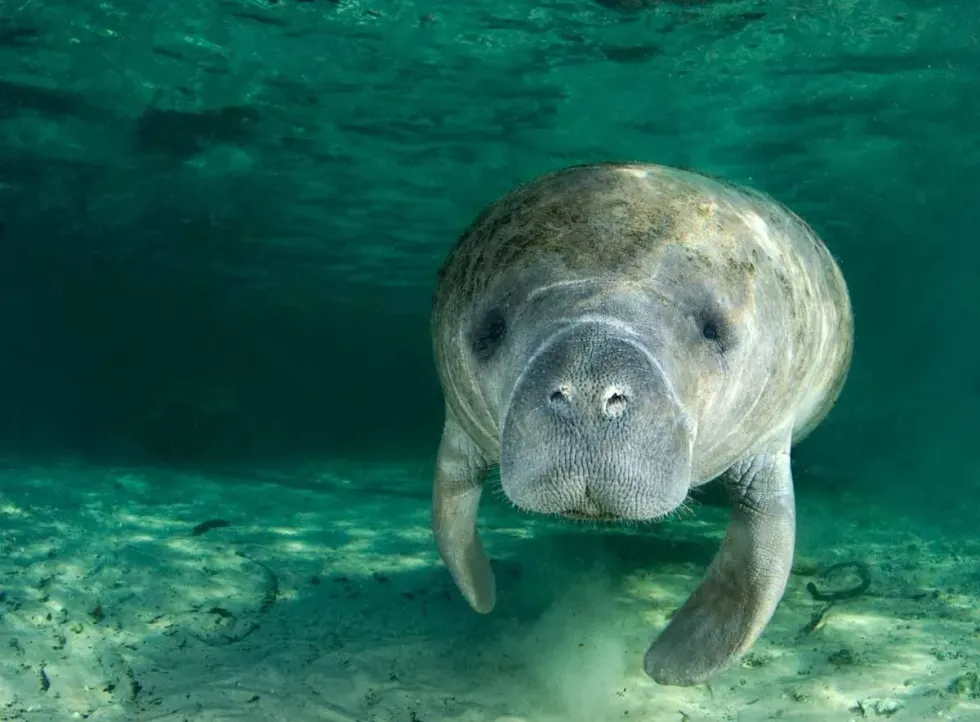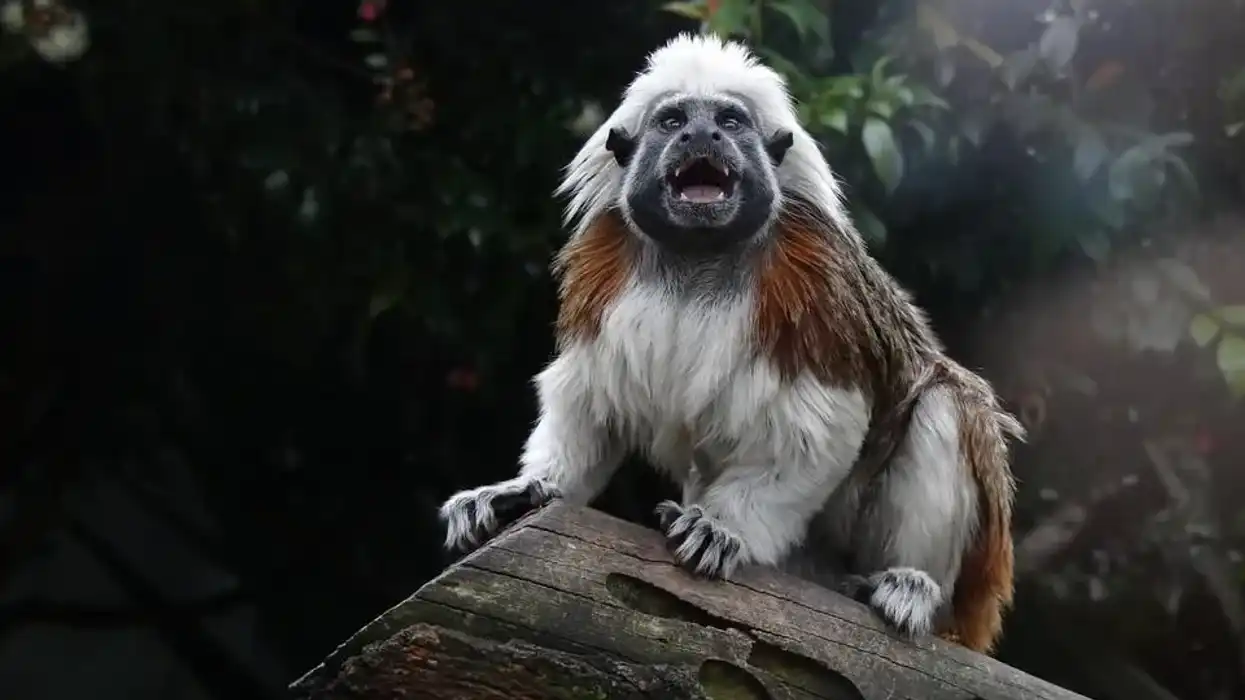The West Indian manatee (Trichechus manatus), also known as a 'sea cow' or the North American manatee, is also the largest surviving and living member of the aquatic mammal order called Sirenia.
The West Indian manatee species is divided into two subspecies, the Florida manatee (Trichechus manatus latirostris) and the Caribbean manatee called the Antillean manatee (Trichechus manatus manatus). The Florida subspecies is generally seen along the coasts of Florida, but it can be found as far west as Texas and as far north as Massachusetts too.
The Antillean subspecies is sparsely distributed all through the Caribbean, ranging from as far north as Mexico to as far south as Brazil.
If you like reading these interesting facts about the West Indian manatee (latirostris and Antillean) you can also check out more facts about the leopard seal and fennec fox here on Kidadl.
West Indian Manatee Interesting Facts
What type of animal is a West Indian manatee?
The West Indian manatee (Trichechus manatus) is also known as a sea cow and is an aquatic animal species found generally in the warm waters of tropical regions, usually preferring to live in the warm water of central America. Being the marine mammal that they are, they're unfortunately hunted for their skin and high-fat content.
What class of animal does a West Indian manatee belong to?
The West Indian manatee is one of the biggest marine mammals known to exist, apart from whales. Generally, in manatees, the females are bigger and heavier than males and during each breeding season they give birth to one or two calves.
How many West Indian manatees are there in the world?
Even though today there are around 13,000 West Indian manatees believed to be alive, they've been on the Vulnerable list in terms of their conservation status for a while now. Their numbers are declining fast due to illegal hunting, vessel striking, loss of warm waters, and prenatal mortality.
Where does a West Indian manatee live?
West Indian manatees prefer to live in the shallow warm waters of tropical oceanic regions near the United States. Recently, more and more manatees have had to be shifted to living in captivity due to a drastic loss of habitat and in order to protect them from illegal hunting and vessel striking.
What is a West Indian manatee's habitat?
Tropical coastal areas are the prime habitat for manatees, and they can be found from Central America to South America. Living in shallow coastal waters, they spend many hours a day eating and you can sometimes also see calves with their mothers when wandering around these coastal areas.
Who do West Indian manatees live with?
Usually preferring to live alone or in pairs, they're often seen swimming alone along coastlines and females can often be seen with their young. The only time you are likely to see West Indian manatees in a herd is either during their mating season or if the species are sharing small areas containing lots of food.
They're not territorial so they can share an area pretty easily.
How long does a West Indian manatee live?
Even though they are vulnerable, manatees, especially West Indian manatees are known to live for as long as 50 years. However, in wild very few can survive for that long, as they're often hunted illegally, or end up with an accidental death through vessel striking. Despite this, in captivity, they're known to live for as long as 60 years.
How do they reproduce?
During the breeding season, breeding takes place in huge mating herds, where several males group around one estrous female and start competing for her attention. Larger males, who are presumably older, have been known to dominate these mating herds. These older males are likely responsible for the most successful breeding seasons.
What is their conservation status?
Currently, they are marked as Vulnerable by the IUCN, so West Indian manatees need to be protected by the wildlife service. As they are not territorial, West Indian manatees have no natural ways to protect themselves from predators or from illegal hunters.
West Indian Manatee Fun Facts
What do West Indian manatees look like?
West Indian Manatees, true to their nickname 'sea cow', are not generally aggressive and neither are they territorial. They have huge bodies and really earn their description as a 'gentle giant'. Their two subspecies, the Florida manatee and Antillean manatee are spread throughout Central and South America.
How cute are they?
These sea cows have an oddly cute appearance to them. Despite being wild animals, they generally are not aggressive side and sometimes even allow humans to swim beside them. Their trusting nature resembles that of a child, they enjoy human interactions and are curious by nature. This just makes them more cute and adorable than they already are!
How do they communicate?
West Indian manatees are known to communicate using both touch and vocalizations. Their vocalizations sound like squeals and little squeaks. Mother manatees and calf manatees recognize each other with the help of these vocalizations, which are used to help the mother and calf remain in contact.
How big is a West Indian manatee?
Ranging from 8.9–15 ft (2.7–4.6 m) West Indian manatees are known as the gentle giants of the oceans. Even being this long, they're still two times smaller than Steller's sea cow, which has now unfortunately gone extinct.
How fast can a West Indian manatee move?
West Indian manatees can move at speeds of between 3-5 mph (4.8-8 kmph). Even though they can hold their breath underwater for almost 20 minutes, they always come up for air every two to five minutes.
How much do West Indian manatees weigh?
As females are usually bigger and heavier than males among West Indian manatees, these endangered species have a body weight ranging anywhere from 440–3,649 lb (200–1,655 kg). A calf weighs at least 66.2 lb (30kg).
What are their male and female names of the species?
A male manatee is called a bull and a female is called a cow. While the female is slightly bigger in size than the male, it is known that in breeding groups, the more experienced and older males dominate over others and have the best chance at mating.
What would you call a baby West Indian manatee?
A baby West Indian manatee is called a calf. Female West Indian manatees can give birth to up to two calves.
Like many other animals, manatees don't form permanent bonds, so, the calves are left under the female's care for two to five years, after which they start to get their own food. The early years of the young (from two years to five years) are spent living with their mothers.
What do they eat?
The typical West Indian manatee diet consists mainly of vegetation. As they are herbivores, they can feed on over 60 different species of aquatic plants, from both fresh and saltwater.
Seagrass is known to be a staple in the manatee diet, especially in coastal regions. When the tide is high, they also enjoy feeding on different grasses and leaves.
West Indian manatees usually graze for five or more hours every day and consume anywhere between 4-10% of their body weight just in wet vegetation in a day. The exact amount depends on the size of their body and the activities they do.
Are they dangerous?
It's just not in their nature to be dangerous or aggressive. Far from that, they enjoy having small fleeting human interactions and are as curious as a creature can be. They're generally harmless to swimmers and often enjoy swimming beside humans for short periods of time.
Would they make a good pet?
Even though these gentle giants are harmless, they're still wild animals and shouldn't be kept as pets. Living in open waters is what they deserve, though these days due to poaching and accidents it's becoming extremely hard for them to survive in their natural habitat.
They are regularly moved from nature to captivity for their own protection. You can visit a local manatees sanctuary (if you have one) to support this species as much as possible and spread awareness about their struggles.
Did you know...
These beautiful sea cows are allegedly the animals who first inspired rumors about mermaids. According to Christopher Columbus, while he was voyaging on his first journey to America he came across one and noted down that "they are not so beautiful as they are said to be, for their faces had some masculine traits."
Is the West Indian manatee endangered?
In the '70s, West Indian manatees were declared endangered as their numbers dropped significantly.
After this, many actions had been taken by different governments under the Endangered Species Act to get their numbers back up which have been successful. They are now classified as Vulnerable and, due to illegal hunting by humans, losses of habitat, climate change, vessel striking, and prenatal mortality, their numbers have been decreasing again recently.
As they don't have any natural protection from their main predators (humans are their main predators and there are no natural predators that eat the West Indian manatee) and can't save themselves, they often sadly end up perishing.
Different types of manatee
Currently, three species of manatees are known to exist on earth. The West Indian manatee can be found along the east coast of Southern and Central America, from Florida to Brazil. Amazonian manatees are known to inhabit the Amazon River. And last but not least, the African manatee is found swimming along the west coasts and rivers of Africa.
Here at Kidadl, we have carefully created lots of interesting family-friendly animal facts for everyone to discover! Learn more about some other mammals including the walrus, or plains zebra.
You can even occupy yourself at home by drawing one on our west indian manatee coloring pages.









